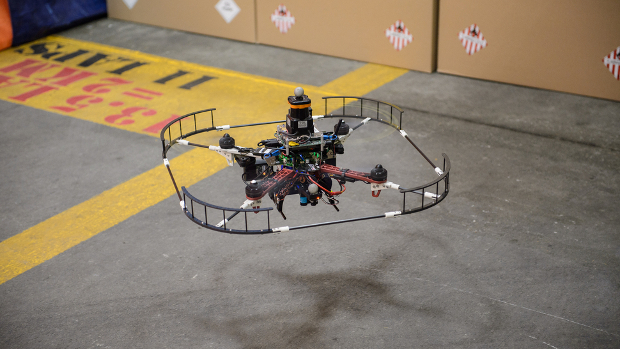DARPA wants to exploit the power of the internet of things to help the US dominate battlefields.
The Defense Advance Research Projects Agency said it will fund the development of sensors and artificial intelligence systems that could help break into, extract, and analyse information from enemy devices and communication systems.
The components and systems will arm the US with more data to analyse enemy moves and strategy. Information is king in wars, and DARPA wants to develop technology that can break into enemy systems.
“They are talking about going into any situation and extracting information at any time, [with] artificial intelligence systems that can attack and hack any network,” said Jim McGregor, principal analyst at Tirias Research.
Of course, not all DARPA research comes to fruition. Floating crazy concepts and promoting an exchange of ideas among researchers and companies are among the main goals of DARPA, which operates as the research arm of the US Dept of Defense.
While most of the ideas are misses, DARPA has been responsible for some technologies we take for granted. It played a big role in the development of the Internet, GPS, and the computer mouse. The agency is now promoting the development of brain-like chips and quantum computers, both of which are still considered far off from practical use.
Now, DARPA wants to fund the development of sensors and electromagnetic systems that could break into point-to-point wired and wireless communications, even ones that are not linked to the Internet. The agency had no comment on its research request.
DARPA has been researching sensors for a while, most notably working on the successor to GPS. DARPA is funding the development of new location-tracking technology and components that include sensors, high-precision clocks, self-calibrating gyroscopes, and accelerometers that can track position accurately over long periods.
There are ways to extract information from data feeds and devices. In this case, DARPA is looking at various ways to tap into wired or wireless networks or devices to monitor communications or steal security keys.
Beyond breaking in, the components need to be able to process the data gathered and dispatch only relevant chunks of intelligence information.
An unmanned aerial vehicle would be a perfect platform, McGregor said. A small drone with the new sensors can fly into any situation, understand the communication, and then tap into data feeds using various techniques.
Network jamming
Technologies like this could also help fill security holes in communications networks. For example, researchers at the University of California, San Diego on Tuesday announced new circuitry to establish a reliable RF communications network that can’t be easily jammed. The research was partly funded by DARPA.
For data gathering instruments, DARPA is also asking researchers to develop “tactical” sensors that are able to parse and extract relevant data from nearby or remote locations. The sensors will need to “exhibit ‘selective attention’ where they only collect and transmit relevant signals to conserve power,” DARPA said in a document inviting proposals from researchers.
Essentially, DARPA is chasing intelligent systems that can process and extract only relevant data, McGregor said. The sensors will need edge processing capabilities where they can analyse data immediately and trash irrelevant information. These sensors and systems won’t be able to cross-reference larger data repositories on the cloud.
McGregor likened the intelligent sensors and systems to autonomous cars, which sometimes have to make immediate driving decisions by evaluating a situation based on data collected by sensors. Some autonomous car control decisions have to be made in real time, leaving no time to access the cloud for help.
Commercial IoT installations are increasingly using edge processing to sniff out irrelevant information. Only relevant information is sent for further analysis.
To achieve its goals, DARPA needs better control over how it uses the radio spectrum. The agency is looking for the development of new types of sensors that could keep “warfighters informed as they never have been before,” DARPA said.
Location-tracking helps warfighters and drones hit targets with amazing accuracy. The new sensors could supplement GPS and its successor technology.
Controlling the spectrum ensures a smooth flow of IoT data and jams enemy communications, McGregor said.
IDG News Service








Subscribers 0
Fans 0
Followers 0
Followers